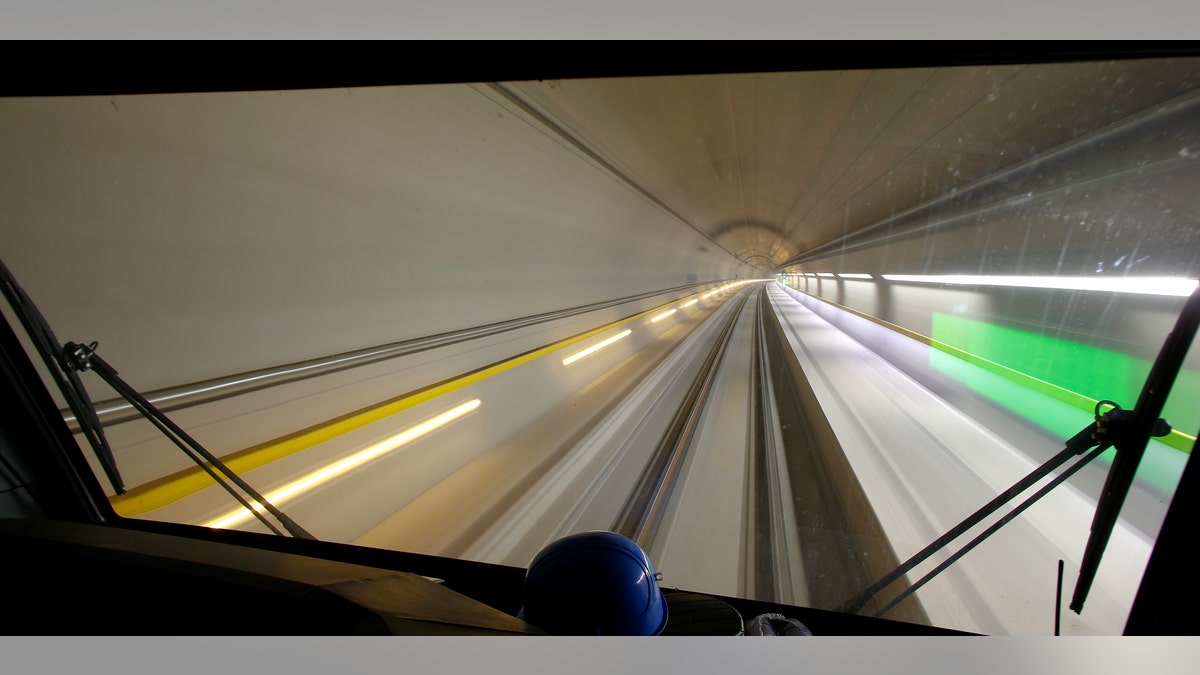
A longtime exposure from the driver's cabin shows the NEAT Gotthard Base Tunnel during a media visit, near the town of Sedrun, Switzerland March 10, 2016. (REUTERS/Arnd Wiegmann)
Heralded as the construction project of the century, the Gotthard Base Tunnel in Switzerland is among the world's most ambitious tunnel projects, spanning more than 35 miles and taking 17 years to build. The tunnel, which opened on June 1, runs under the Alps and connects the Swiss municipalities of Erstfeld and Bodio.
The architectural marvel is the longest and deepest railway tunnel in the world, and the first flat, low-level route through the Alps. The idea was first proposed in 1968, but project construction didn't begin until 1996, and required the excavation of 94 miles of underground tunnels, shafts, and passages to connect the 35.5-mile route. Approximately 31.1 million tons of granite, sedimentary rock, and other material was moved during construction. The bulk of the digging was handled by tunnel-boring machines (80 percent) with some blasting (20 percent) required in difficult sections. An extensive ventilation network was necessary to aerate the 750-foot-deep tunnel and cool it from its ambient 114 degrees Fahrenheit. Over 2,400 workers were involved in the construction at its peak, and nine of them lost their lives during the $12 billion project.
Related:
- The east coast's ambitious maglev train plan is moving forward
- Take control of your Apple Watch with these 24 essential tips and tricks
- 10 Google Maps tips and tricks to get you from point A to B, or even add a C
The primary purpose of the tunnel is to facilitate the transport of freight and passengers across the Alps. The tunnel's route mirrors the Gotthard Railway, which is an important transportation corridor connecting northern and southern Europe. Traffic across this corridor has increased more than tenfold since 1980, with all existing tunnels operating at their maximum capacity.
The base tunnel opened this week following an inauguration ceremony attended by Swiss Federal President Johann Schneider-Ammann. The rail will open in a limited capacity until the end of the year when full operations are expected to begin. When operating fully, the corridor will carry 325 trains each day. The daily schedule will include 260 freight trains traveling at 99 mph and 25 passenger trains at 124 mph. These speeds will increase over time with trains capable of travel at 155 mph expected to arrive in the coming years.
